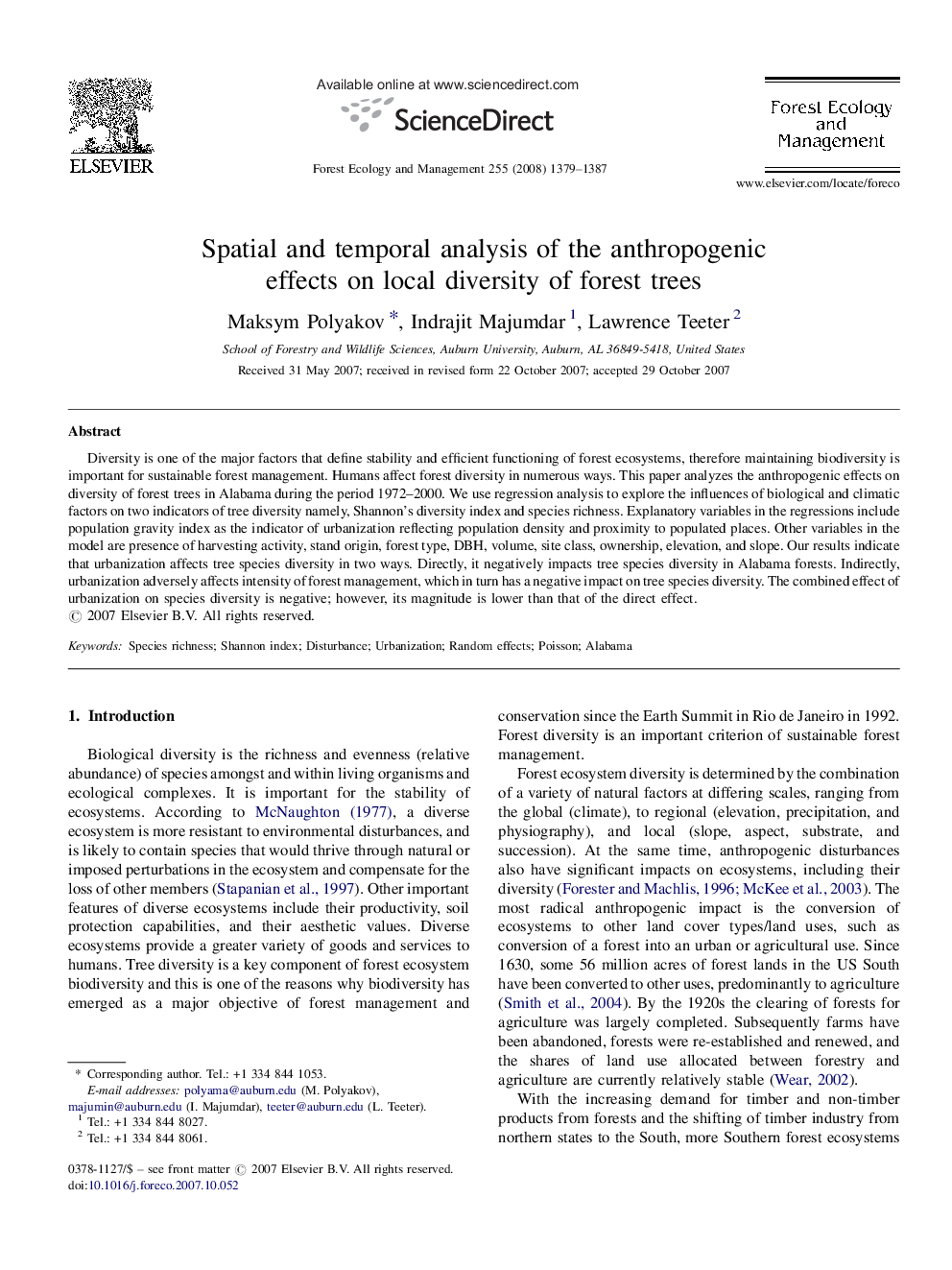| Article ID | Journal | Published Year | Pages | File Type |
|---|---|---|---|---|
| 89467 | Forest Ecology and Management | 2008 | 9 Pages |
Diversity is one of the major factors that define stability and efficient functioning of forest ecosystems, therefore maintaining biodiversity is important for sustainable forest management. Humans affect forest diversity in numerous ways. This paper analyzes the anthropogenic effects on diversity of forest trees in Alabama during the period 1972–2000. We use regression analysis to explore the influences of biological and climatic factors on two indicators of tree diversity namely, Shannon's diversity index and species richness. Explanatory variables in the regressions include population gravity index as the indicator of urbanization reflecting population density and proximity to populated places. Other variables in the model are presence of harvesting activity, stand origin, forest type, DBH, volume, site class, ownership, elevation, and slope. Our results indicate that urbanization affects tree species diversity in two ways. Directly, it negatively impacts tree species diversity in Alabama forests. Indirectly, urbanization adversely affects intensity of forest management, which in turn has a negative impact on tree species diversity. The combined effect of urbanization on species diversity is negative; however, its magnitude is lower than that of the direct effect.
